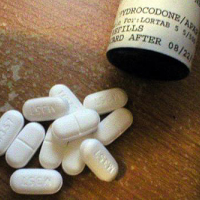FDA Panel Advises Limiting Prescription Refills for Addictive Painkillers

Apparently unable to stem growing prescription drug abuse, the Drug Enforcement Administration (DEA) last week successfully pressured an expert advisory panel to recommend that the Food and Drug Administration (FDA) tighten restrictions on painkillers containing Hydrocodone. An opioid found in prescription drugs including Vicodin, Norco and Lortab, Hydrocodone is the most prescribed painkiller in the U.S., with 131 million prescriptions written in 2010 alone. It is also, along with the related opioid Oxycodone, among the most widely abused prescription medications in the U.S., with painkillers now killing more Americans than heroin and cocaine combined.
Although the FDA denied a similar DEA request in 2008, it is expected to go along this time, but officials at the Department of Health and Human Services will make a final decision. Specifically, the advisory panel is proposing that Hydrocodone be reclassified from being a Schedule III drug—a drug with moderate abuse potential—to a more restrictive Schedule II classification, which embraces those with a high potential for abuse. Schedule I drugs are those with a high potential for abuse and no currently accepted medical use.
Under Schedule II, Hydrocodone refills would be forbidden without a new, written prescription from an M.D.—not a physician assistant or nurse practitioner. Distributors would have to store it in special vaults.
However, the 19 to 10 vote revealed skepticism that the change would have much of an impact on drug abuse. Critics point out that Oxycodone has been on Schedule II since the beginning, yet abuse is rampant. They also said the change could create unfair obstacles for patients in chronic pain, especially the elderly and those in nursing homes for whom the paper prescription requirement would require difficult trips to a doctor’s office. The requirement that an M.D. sign the prescription will also have an especially harsh impact in rural areas, where doctors are often scarce.
Some panelists also argued that the change would simply redirect addicts to other drugs like heroin, use of which has declined recently. “Many of us are concerned that the more stringent controls will eventually lead to different problems, which may be worse,” contended Dr. John Mendelson, a senior scientist at the Addiction and Pharmacology Research Laboratory at the California Pacific Medical Center Research Institute in San Francisco.
That question remains salient: Given that DEA has failed to prevent use of Schedule I drugs like heroin and marijuana, which are outright banned, and failed to stem abuse of Schedule II drugs like Oxycodone, why should anyone believe that this change will do anything to reduce abuse of Hydrocodone?
-Matt Bewig
To Learn More:
F.D.A. Likely to Add Limits on Painkillers (by Sabrina Tavernise, New York Times)
Panel Prods FDA to Restrict Hydrocodone, Ingredient in Prescription Painkillers (by Stephanie Smith, CNN)
FDA Refuses to Control 2nd-Most Abused Drug (by Noel Brinkerhoff, AllGov)
Prescription Drugs Cause More Deaths than Illegal Drugs (by Noel Brinkerhoff, AllGov)
- Top Stories
- Unusual News
- Where is the Money Going?
- Controversies
- U.S. and the World
- Appointments and Resignations
- Latest News
- Trump Announces He Will Switch Support from Russia to Ukraine
- Americans are Unhappy with the Direction of the Country…What’s New?
- Can Biden Murder Trump and Get Away With it?
- Electoral Advice for the Democratic and Republican Parties
- U.S. Ambassador to Greece: Who is George Tsunis?






Comments